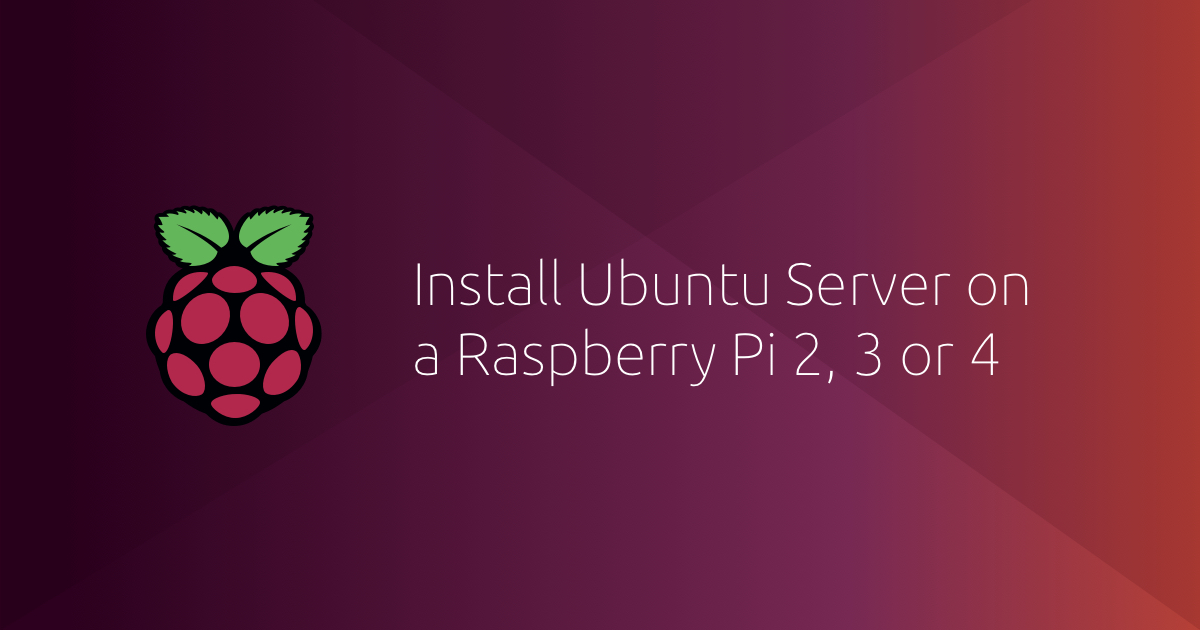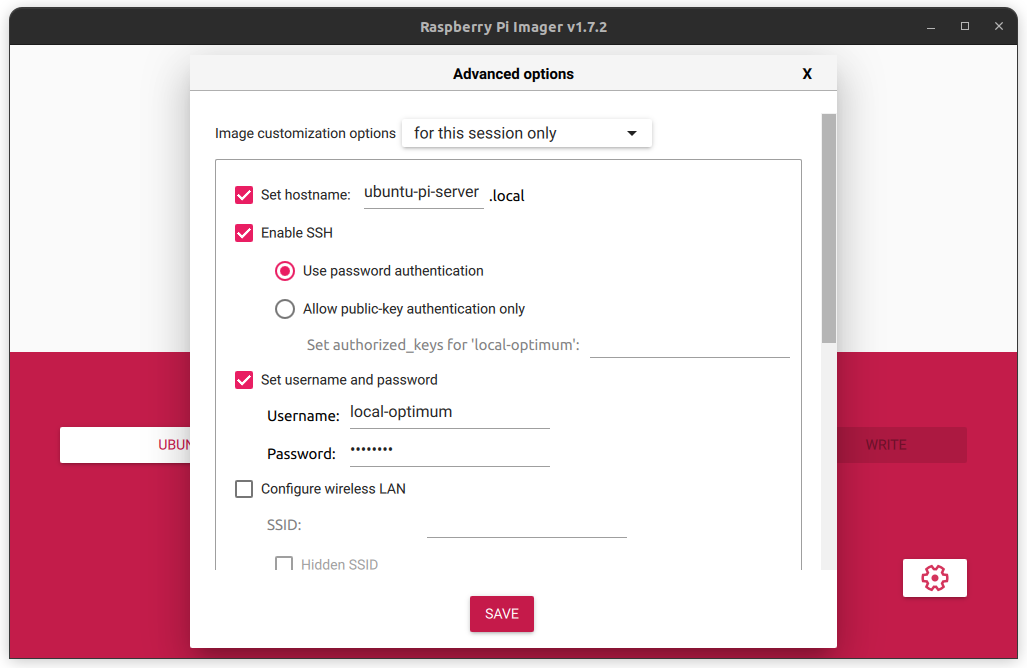Mastering Remote IoT Monitoring With SSH On Raspberry Pi Ubuntu: The Ultimate Free Guide
Picture this: You've just set up your Raspberry Pi to monitor your IoT devices remotely, but you're stuck figuring out how to connect via SSH and ensure everything runs smoothly on Ubuntu. Don't worry; we've got your back! In this guide, we'll break down the process step-by-step so you can confidently manage your IoT setup from anywhere in the world.
Remote IoT monitoring using SSH on Raspberry Pi Ubuntu is a game-changer for tech enthusiasts and professionals alike. Whether you're a hobbyist tinkering with home automation or a seasoned engineer managing industrial IoT systems, understanding how to configure SSH on Raspberry Pi Ubuntu is essential. This article dives deep into the world of remote monitoring, ensuring you have all the tools and knowledge needed to succeed.
Before we dive into the nitty-gritty details, let's take a moment to appreciate the power of SSH. It's not just a tool; it's a lifeline for anyone managing remote systems. By the end of this guide, you'll be equipped with the skills to download, install, and configure everything you need for seamless remote IoT monitoring. Ready? Let's get started!
Read also:Bypass Patreon Paywall Unlock Exclusive Content Without Breaking The Bank
Understanding the Basics of Remote IoT Monitoring
Remote IoT monitoring allows you to keep an eye on your IoT devices without being physically present. Think of it as having a pair of eyes and hands in multiple locations at once. SSH plays a crucial role in this setup, providing a secure channel to access and manage your Raspberry Pi remotely.
Here's why remote monitoring is important:
- It saves time by eliminating the need for physical visits.
- It enhances security by allowing you to monitor and respond to threats instantly.
- It increases efficiency by enabling real-time data analysis and decision-making.
For those new to the concept, understanding the basics of SSH and how it integrates with Raspberry Pi Ubuntu is key. Let's explore this further in the next section.
What Is SSH and Why Should You Care?
SSH, or Secure Shell, is a cryptographic network protocol that secures communications between devices over an unsecured network. It's like having a secret tunnel that only you and your Raspberry Pi can access. Here's why SSH is indispensable:
- It encrypts all data transmitted between your computer and Raspberry Pi.
- It provides secure authentication methods, such as password or key-based login.
- It supports file transfers, remote command execution, and more.
By leveraging SSH, you can confidently manage your IoT devices without worrying about data breaches or unauthorized access.
Setting Up Your Raspberry Pi for Remote IoT Monitoring
Now that you understand the importance of SSH, it's time to set up your Raspberry Pi for remote IoT monitoring. This section will guide you through the essential steps to ensure everything runs smoothly.
Read also:Crystal Couture Dress To Impress Elevate Your Style Game
Installing Ubuntu on Your Raspberry Pi
Ubuntu is a popular choice for Raspberry Pi due to its stability and extensive community support. Here's how you can install it:
- Download the official Raspberry Pi Imager from the Raspberry Pi website.
- Select the Ubuntu image compatible with your Raspberry Pi model.
- Insert an SD card into your computer and flash the image using the Imager.
- Insert the SD card into your Raspberry Pi and power it on.
Once Ubuntu is installed, you're ready to move on to the next step.
Enabling SSH on Your Raspberry Pi
Enabling SSH on your Raspberry Pi is straightforward. Follow these steps:
- Open the terminal on your Raspberry Pi.
- Type the command
sudo raspi-configand hit Enter. - Navigate to the "Interfacing Options" menu.
- Select "SSH" and enable it.
- Reboot your Raspberry Pi to apply the changes.
With SSH enabled, you're one step closer to remote access.
Connecting to Your Raspberry Pi via SSH
Connecting to your Raspberry Pi via SSH is the next hurdle to overcome. Don't worry; it's easier than it sounds. Here's how you can do it:
Using PuTTY on Windows
PuTTY is a popular SSH client for Windows users. Here's how to use it:
- Download and install PuTTY from the official website.
- Launch PuTTY and enter your Raspberry Pi's IP address in the "Host Name" field.
- Select "SSH" as the connection type.
- Click "Open" and log in using your Raspberry Pi's credentials.
With PuTTY, you can easily access your Raspberry Pi from any Windows machine.
Using Terminal on macOS/Linux
For macOS and Linux users, the built-in terminal is all you need. Here's how to connect:
- Open the terminal on your computer.
- Type the command
ssh username@raspberrypi_ip_addressand hit Enter. - Enter your Raspberry Pi's password when prompted.
That's it! You're now connected to your Raspberry Pi via SSH.
Enhancing Security for Remote IoT Monitoring
Security should always be a top priority when dealing with remote systems. Here are some tips to enhance the security of your Raspberry Pi:
- Change the default SSH port to something less common.
- Disable password-based login and use SSH keys instead.
- Install a firewall to restrict access to specific IP addresses.
- Regularly update your Raspberry Pi's software to patch vulnerabilities.
By implementing these measures, you can significantly reduce the risk of unauthorized access.
Setting Up SSH Keys
SSH keys provide a more secure method of authentication compared to passwords. Here's how to set them up:
- Generate an SSH key pair on your local machine using the command
ssh-keygen. - Copy the public key to your Raspberry Pi using the command
ssh-copy-id username@raspberrypi_ip_address. - Disable password-based login by editing the SSH configuration file.
With SSH keys in place, you can rest assured that your Raspberry Pi is secure.
Downloading and Installing Necessary Software
To fully utilize your Raspberry Pi for remote IoT monitoring, you'll need to install some additional software. Here's what you should consider:
Installing a Web Server
A web server allows you to access your IoT data through a web interface. Apache is a popular choice for this purpose. Install it using the command:
sudo apt update && sudo apt install apache2
Once installed, you can access the web server by entering your Raspberry Pi's IP address in a browser.
Installing a Database
A database is essential for storing and retrieving IoT data. MySQL is a reliable option. Install it with the command:
sudo apt update && sudo apt install mysql-server
After installation, secure your MySQL installation by running the command:
sudo mysql_secure_installation
With a database in place, you can efficiently manage your IoT data.
Troubleshooting Common Issues
Even with the best preparations, issues can arise. Here are some common problems and how to solve them:
- Connection Refused: Ensure SSH is enabled and the correct IP address is used.
- Permission Denied: Verify your credentials and check if SSH keys are correctly configured.
- Slow Connection: Optimize your network settings and reduce unnecessary processes on your Raspberry Pi.
By addressing these issues promptly, you can maintain a stable and reliable remote IoT monitoring setup.
Checking Your Raspberry Pi's Status
Regularly checking your Raspberry Pi's status can prevent potential problems. Use the following commands:
topto monitor system processes.df -hto check disk space usage.ping raspberrypi_ip_addressto test network connectivity.
These commands provide valuable insights into your Raspberry Pi's performance.
Best Practices for Remote IoT Monitoring
To make the most of your remote IoT monitoring setup, follow these best practices:
- Document your setup and configurations for future reference.
- Regularly back up your data to prevent loss in case of hardware failure.
- Monitor system logs for any unusual activity.
- Stay updated with the latest trends and technologies in IoT and remote monitoring.
By adhering to these practices, you can ensure a smooth and efficient remote IoT monitoring experience.
Staying Updated with IoT Trends
The world of IoT is constantly evolving. Stay informed by:
- Subscribing to industry newsletters and blogs.
- Participating in online forums and communities.
- Attending webinars and conferences.
Keeping up with the latest trends will help you stay ahead of the curve.
Conclusion
In conclusion, mastering remote IoT monitoring with SSH on Raspberry Pi Ubuntu is an invaluable skill for anyone interested in IoT. By following the steps outlined in this guide, you can confidently set up and manage your IoT devices from anywhere in the world.
We encourage you to share your experiences and insights in the comments below. Your feedback helps us improve and provides valuable information to other readers. Don't forget to explore our other articles for more tips and tricks on IoT and remote monitoring.
Happy tinkering, and may your IoT adventures be fruitful!
Table of Contents
- Understanding the Basics of Remote IoT Monitoring
- What Is SSH and Why Should You Care?
- Setting Up Your Raspberry Pi for Remote IoT Monitoring
- Connecting to Your Raspberry Pi via SSH
- Enhancing Security for Remote IoT Monitoring
- Downloading and Installing Necessary Software
- Troubleshooting Common Issues
- Best Practices for Remote IoT Monitoring
- Staying Updated with IoT Trends
- Conclusion



